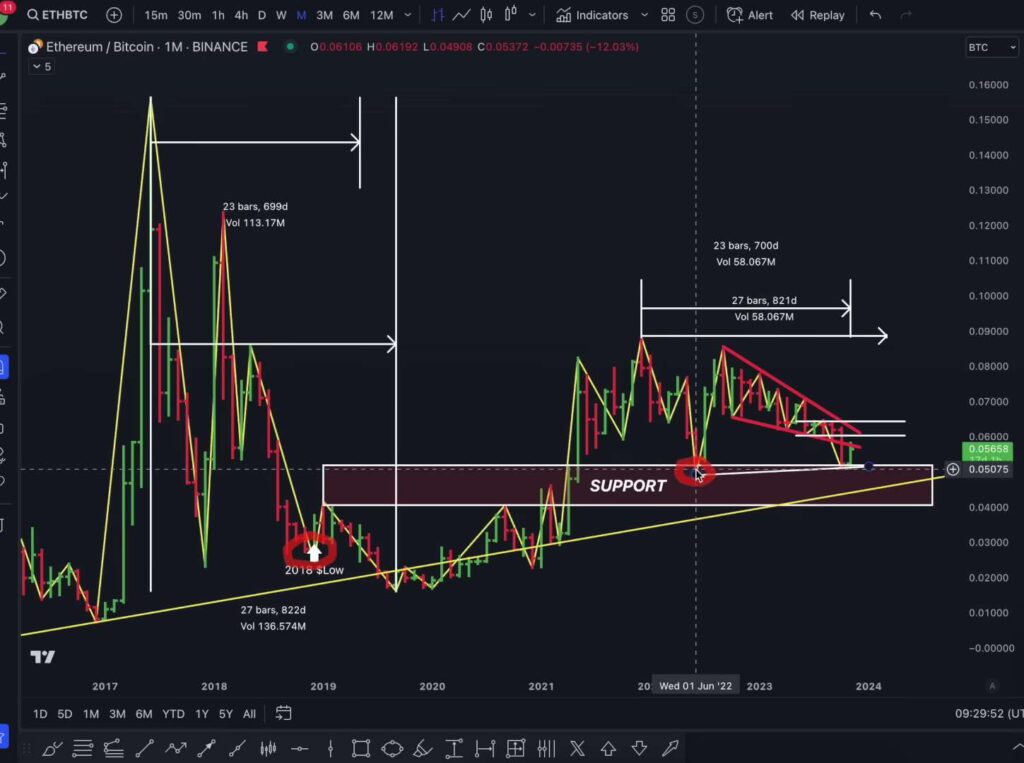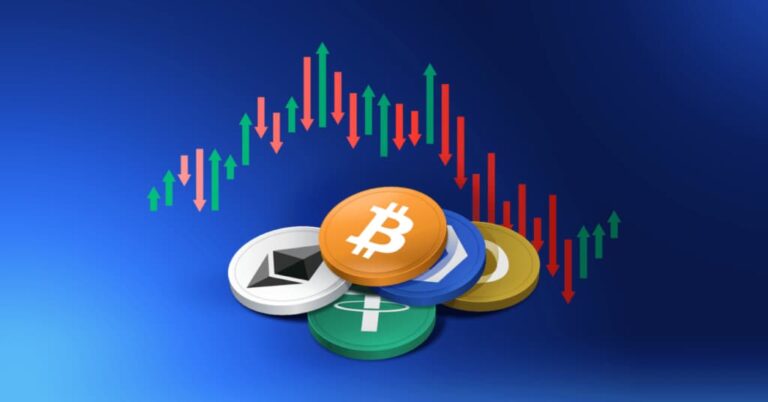Cryptocurrencies have had a presence for more than a decade, and even to this day, we are constantly acquiring new knowledge and insights within the market. Throughout the years, we have witnessed the repetition of numerous trading patterns, while regulatory changes have significantly altered the landscape. Furthermore, the cryptocurrency market has been marked by its characteristic volatility, resulting in substantial price fluctuations.
While this may appear uncertain and intimidating, it has provided trading analysts with the opportunity to discern the cyclical nature inherent in these activities. This valuable information has empowered both investors and consumers to gain a deeper comprehension of the cryptocurrency market’s recurring patterns. More importantly, it has enabled them to leverage this knowledge to their benefit.
In the forthcoming article, we will not only elucidate the dynamics of cryptocurrency market cycles but also impart strategies for their identification and advantageous utilization.
Decrypting Market Cycles: An Essential Primer for Investors
Market cycles, a recurrent phenomenon in the financial world, pervade multiple asset classes, including stocks, commodities, and of course, cryptocurrencies. Regardless of where one chooses to invest – in traditional financial markets or in blockchain technology platforms – these cycles play a significant role in shaping the market trends.
Indeed, market cycles can be seen as rhythmic fluctuations between the peak and trough of a market. These fluctuations provide insightful cues about the potentially profitable entry and exit points for traders and investors.
Duration and Phases of Market Cycles
Although the length of a market cycle can differ based on the type of trading one engages in (short-term or long-term), the crucial elements characterizing them remain the same. Essentially, a market cycle is typically divided into four principal phases:
- Accumulation: This is the initial phase when savvy investors start acquiring assets when prices are relatively low, often under the radar of general market participants;
- Markup: As more market players recognize the asset’s potential and begin buying, the demand increases, leading to a surge in the asset’s price;
- Distribution: This phase is characterized by the asset’s price stabilization at its peak, after which the most aware investors start offloading their holdings, anticipating a soon-to-come downturn;
- Markdown: In the final phase, as selling intensifies, the asset’s prices drop significantly, marking the end of the cycle and setting the stage for the next accumulation phase.
It is important to note that these phases are not random, but rather they follow a predictable pattern based on a host of fundamental and technical factors. And by understanding these cycles, investors can make more informed decisions about when to buy or sell their assets.
The Four Pillars of a Market Cycle
Market cycles significantly impact asset prices in both traditional and blockchain technology-driven markets. Understanding these cycles can empower investors to make informed trading decisions. It’s important to note that these cycles are not confined to a particular period; they can span several months or even years. Let’s dissect these phases one by one:
- The Accumulation Phase
This phase signifies the bottom of the market cycle, characterized by low and stagnant asset prices. While some might perceive this as an unfavorable stage, experienced investors often consider it an opportunity to acquire the asset at a relatively low cost—buying the dip.
Undervalued assets are usually coupled with market uncertainty as short-term traders exit the market and long-term investors step in, symbolizing a consolidation period. Often, this period serves as a prelude to an upward trend in prices.
The accumulation phase concludes when the overall market sentiment changes from pessimistic to neutral. It’s a phase when significant sums of money enter and exit simultaneously, causing a market flux.
- The Markup phase
As the overall market mood improves, the asset prices begin to rise, and stability starts to form. Astute investors continue their buying spree, reinforcing the upward price trend and augmenting the asset’s buying power.
This positive momentum often triggers a Fear of Missing Out (FOMO) among potential buyers, drawing them into the market and subsequently propelling the asset prices further.
As greed overtakes the market, trading volumes intensify, marking the perfect time for high-profile investors to start selling their holdings. Their selling activity reduces the pace of price increases, inducing a market pullback. The markup phase epitomizes a shift in sentiment from neutral to bullish, and eventually, to euphoria.
- The Distribution Phase
The third phase in the market cycle, the distribution phase, comes to the fore as the asset prices reach their zenith. The market experiences a period of horizontal trading, propelled by the activity of sellers and buyers. Investor emotions swing like a pendulum between greed, fear, and hope—a desire for the market to surge again.
Interestingly, this phase is often peppered with numerous bullish price indicators. These include ‘head and shoulders’ trading patterns and ‘double’ or ‘triple tops’. However, these bullish signs can mislead investors about the impending downturn.
The distribution phase can either be brief or extend over several months, with volatility at its highest. Traders can anticipate frequent consolidations, breakouts, and market pullbacks.
This phase eventually leads to the market sentiment turning bearish, often ignited by unfavorable news or events. So, investors who manage to discern the signs of this phase can minimize losses by selling their assets.
- The Markdown Phase
The markdown phase signifies the final stage of the market cycle—a phase that can catch novice investors off-guard with its rapid plunge in asset prices. However, astute investors usually stay put with their holdings, viewing this phase as a precursor to the next accumulation phase—thus offering another chance to buy at lower prices.
As asset prices tumble, a defined bottom starts appearing imminent. This bottom, generally reached when the price is half of its peak value, often prompts another widespread sell-off, exacerbating the downtrend.
It is during this part of the cycle that the market sentiment morphs into a bearish stance. The negativity overwhelms all market dynamics, presenting a gloomy picture for short-term traders but a sea of opportunities for long-term and strategic investors. This challenging phase only sets the stage for the next cycle to begin, marking the continuous ebb and flow of the market cycle.
A Real-world Instance of a Cryptocurrency Market Cycle: The Bitcoin Network
A case in point of a practical representation of market cycles is the Bitcoin network. Market participants too often link Bitcoin’s cycles with its halving events. Essentially, Bitcoin halvings are events when the rewards that miners receive for mining a new block halve, happening roughly every 210,000 blocks or approximately every four years.

Until now, three Bitcoin halving events have occurred, with each initiating a bull market in the subsequent months. For instance, the latest Bitcoin halving occurred on May 11, 2020, when Bitcoin was trading around $8,600. Just seven months later, the Bitcoin price skyrocketed to $40,000 for the very first time, embarking on an impressive trajectory of record-breaking highs. As of November 2021, Bitcoin’s peak price was $68,789.63, albeit followed by a drastic 40% drop over the next two months.
Interestingly, market cycles are inherently reliant on a cryptocurrency’s holistic trading patterns and are not influenced by any individual exchange activity. Ideally, the sequence of trading patterns of a cryptocurrency reflects the four aforementioned phases of a market cycle, with a discernible time span separating each phase.
With a deeper understanding of these cycles, crypto traders can keenly identify these phases and construct viable strategies determining when to enter or exit a position to optimize trading outcomes. While the element of risk can never be entirely excluded, comprehending the cyclical patterns of trading can significantly enhance the effectiveness of a digital asset project. It’s critical to keep abreast of market trends, make diligent decisions, and be patient and consistent. Read about is Pump and Dump illegal? Uncover the truth about this controversial practice and its legal implications.
Crypto Supercycles: An Emerging Concept in Blockchain Economy
In the volatile world of cryptocurrencies, the concept of ‘crypto supercycles’ is gaining traction. A supercycle refers to sustained and widespread price movements across the entire cryptocurrency landscape, primarily driven by advancements in blockchain technology adoption.
However, it’s essential to note that this idea is more in the realm of speculation, lacking specific criteria or benchmarks. It hinges on several factors, including increased participation from institutional investors and widespread retail adoption of digital currencies.
Many in the blockchain realm debate the authenticity of a supercycle, considering the dramatic price surges seen, particularly in Bitcoin, which has amplified its value more than five times in the span of a year. This cycle is marked by a succession of all-time-highs in price, with few pronounced or lasting dips.
Whether a crypto supercycle is in play or not, market participants can potentially benefit from these market cycles. For instance, acquiring Bitcoin during the accumulation phase, just as prices are starting to recover from a low, could yield promising results.
In this light, it is crucial for anyone interested in decoding the intricacies of crypto trading cycles to develop a strategic approach to navigate through diverse market cycles. Careful analysis of market trends and patterns can prove rewarding, providing an edge in this unpredictable and rapidly-evolving digital asset market.
Whether one opts for day trading as a full-time occupation or studies market behaviors as a profitable side-hustle, understanding these market cycles can hugely impact investment outcomes. Knowledge is power, and in the world of crypto trading, it is also the key to potentially lucrative trading outcomes.
Conclusion
In this ever-evolving landscape, staying informed, remaining vigilant, and continuously honing your skills as a crypto investor or trader are vital aspects of achieving long-term success. By studying market cycles, staying disciplined, and adapting to changing conditions, you can position yourself to navigate the crypto markets more effectively and make informed decisions that align with your financial goals.











